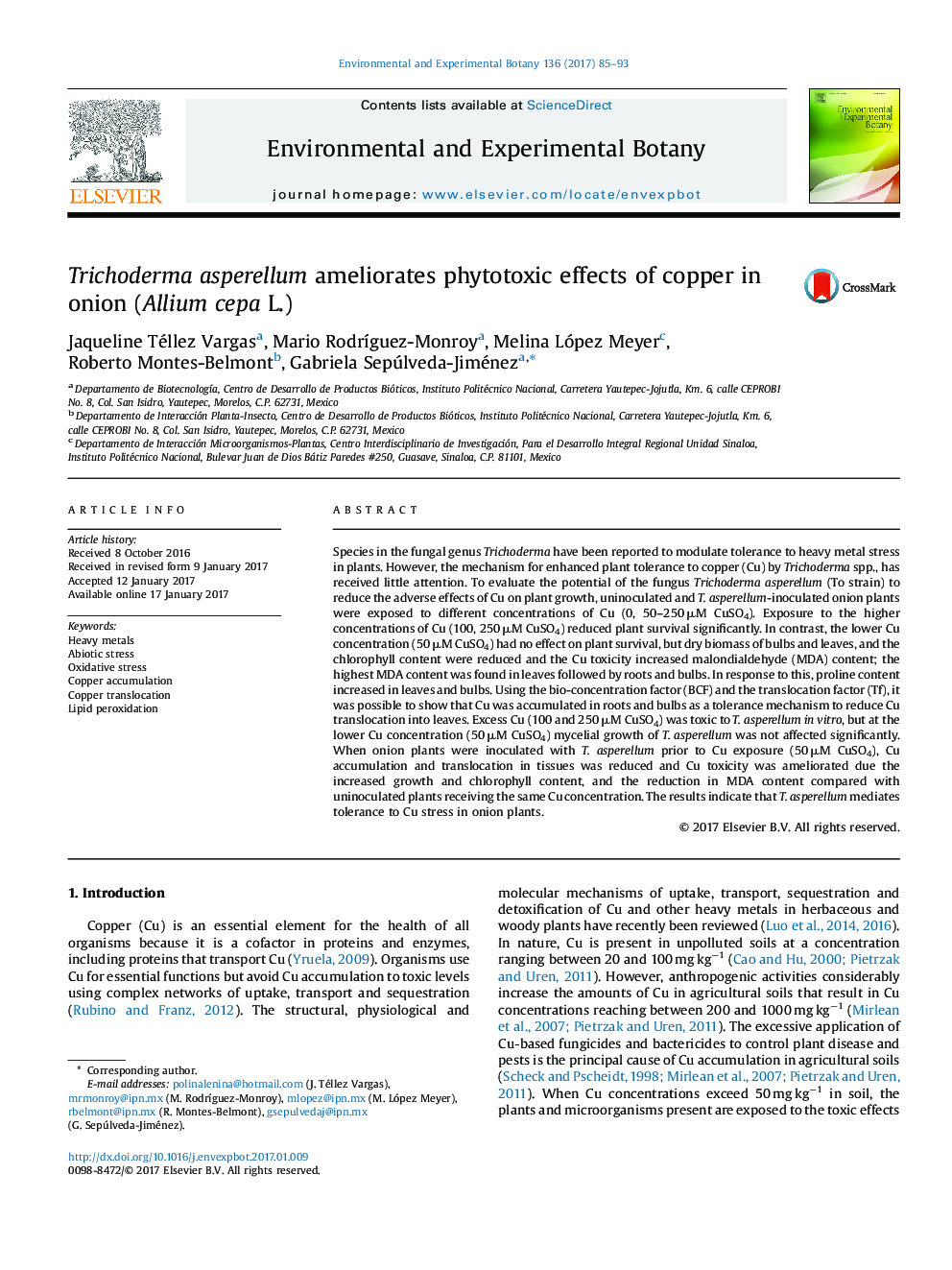| کد مقاله | کد نشریه | سال انتشار | مقاله انگلیسی | نسخه تمام متن |
|---|---|---|---|---|
| 5766745 | 1628041 | 2017 | 9 صفحه PDF | دانلود رایگان |

- Excess copper is toxic to onion plants and Trichoderma asperellum.
- Cu is accumulated in roots and bulbs of onion to tolerate Cu stress.
- Cu is accumulated in the mycelium of T. asperellum.
- T. asperellum reduces Cu accumulation in onion tissues.
- T. asperellum ameliorates Cu toxicity in onion plants.
Species in the fungal genus Trichoderma have been reported to modulate tolerance to heavy metal stress in plants. However, the mechanism for enhanced plant tolerance to copper (Cu) by Trichoderma spp., has received little attention. To evaluate the potential of the fungus Trichoderma asperellum (To strain) to reduce the adverse effects of Cu on plant growth, uninoculated and T. asperellum-inoculated onion plants were exposed to different concentrations of Cu (0, 50-250 μM CuSO4). Exposure to the higher concentrations of Cu (100, 250 μM CuSO4) reduced plant survival significantly. In contrast, the lower Cu concentration (50 μM CuSO4) had no effect on plant survival, but dry biomass of bulbs and leaves, and the chlorophyll content were reduced and the Cu toxicity increased malondialdehyde (MDA) content; the highest MDA content was found in leaves followed by roots and bulbs. In response to this, proline content increased in leaves and bulbs. Using the bio-concentration factor (BCF) and the translocation factor (Tf), it was possible to show that Cu was accumulated in roots and bulbs as a tolerance mechanism to reduce Cu translocation into leaves. Excess Cu (100 and 250 μM CuSO4) was toxic to T. asperellum in vitro, but at the lower Cu concentration (50 μM CuSO4) mycelial growth of T. asperellum was not affected significantly. When onion plants were inoculated with T. asperellum prior to Cu exposure (50 μM CuSO4), Cu accumulation and translocation in tissues was reduced and Cu toxicity was ameliorated due the increased growth and chlorophyll content, and the reduction in MDA content compared with uninoculated plants receiving the same Cu concentration. The results indicate that T. asperellum mediates tolerance to Cu stress in onion plants.
Journal: Environmental and Experimental Botany - Volume 136, April 2017, Pages 85-93